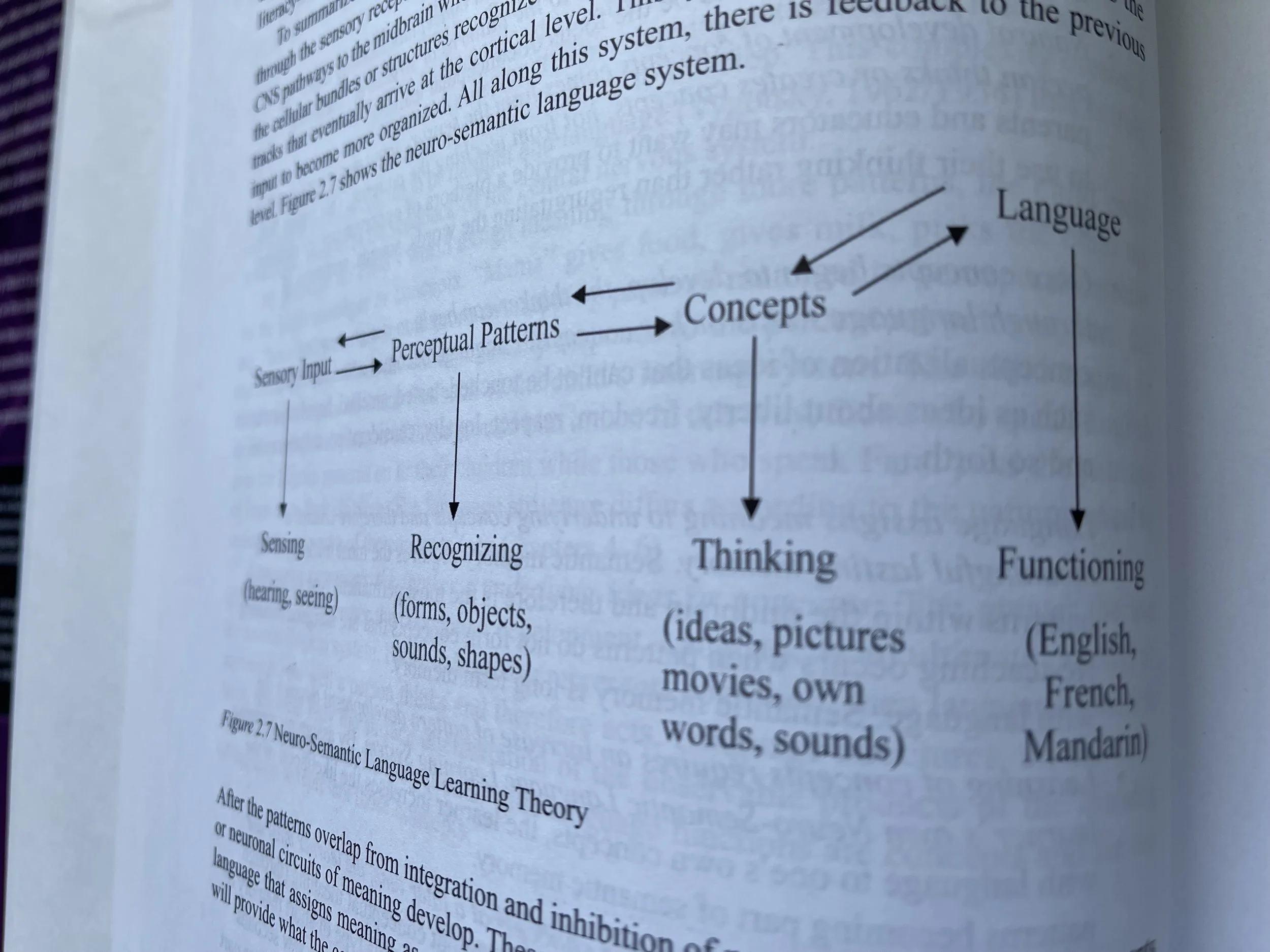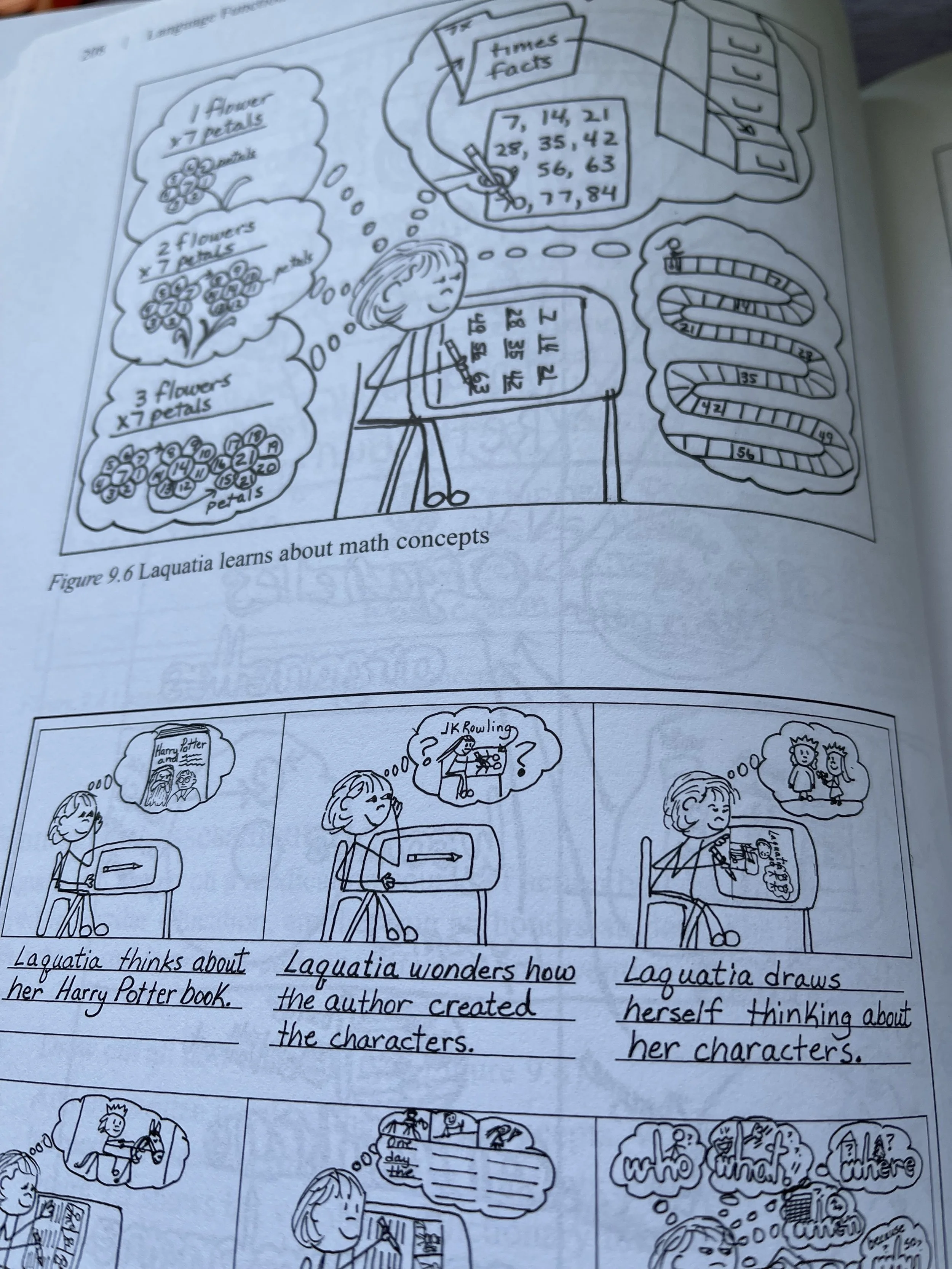The NsLLT
The Neuro-semantic Language Learning Theory (NsLLT) describes the way that all people learn, no matter what their background might be. This Theory (Arwood, 2011) was created by Ellyn Lucas Arwood over decades of synthesizing literature from cognitive psychology, language, and neuroscience which matched with helping individuals and their families in a clinical practice designed to support families and their children with learning, language, behavior problems.
Arwood Neuro-Education Model (ANM)
The Arwood Neuro-Education Model (ANM) was named by a graduate student who realized that her doctoral program of study was specific to Arwood’s background of cognitive psychology, language, and neuroscience. Most neuroeducation approaches integrate neuroscience research with education practice without a consideration for how language functions in the interpretation of research. Language in the ANM overlaps with what is known about semantics (brain and language intersect in the research), pragmatics (the interaction between a speaker and hearer, an author and reader, etc.), and semiotics (the value or purpose of communication with language across literacy). Semantics, pragmatics, and semiotics research takes our knowledge beyond the current use of educational assumptions based on behaviorism methods of model, imitate, practice, generalize, and transfer. Therefore, methods aligned with the NsLLT within the ANM are called Viconic Language Methods (VLMs).
Viconic Language Methods
Viconic Language Methods (VLMs) was coined by Arwood to refer to the composite of more than 50 ways that she used methods aligned with the NsLLT within the ANM to provide effective outcomes for children and their families across ages, diagnoses, and levels of function. All of these methods are based on “what works.” As a practitioner first, Arwood had her first professional jobs with children with whom others did not want to work. So, Arwood created methods that would work. Many of these methods did not match with what she was being taught. Arwood read and read and read along with obtaining much educational knowledge at universities and conferences. Eventually she began to put the theory together that matched the effectiveness of the VLMs. Theory always helps improve practice!
Neuro-Viconic Educational System (NvES) is an explanation for how to take the NsLLT at the nexus of the ANM along with the VLMs into the classroom. Written by Ellyn Arwood and Alyse Rostamizadeh, the NvES is a systemic approach to learning designed to meet the holistic needs of all children. The NvES rests on four principle beliefs: 1) All learning is brain-based (NsLLT); 2) All children learn to think (VLMs); 3) All children learn to be pro-social (Language of RESPECT, 2000); and 4) All children learn through context or event-based learning. The NvES is not a program but an approach that necessitates professional learning, starting with understanding the NsLLT and then learning how to use some of the VLMs eventually creating an event-based context for maximum conceptual learning.
Reach out to me.
Fill out the short form and I’ll get in touch with you shortly.


